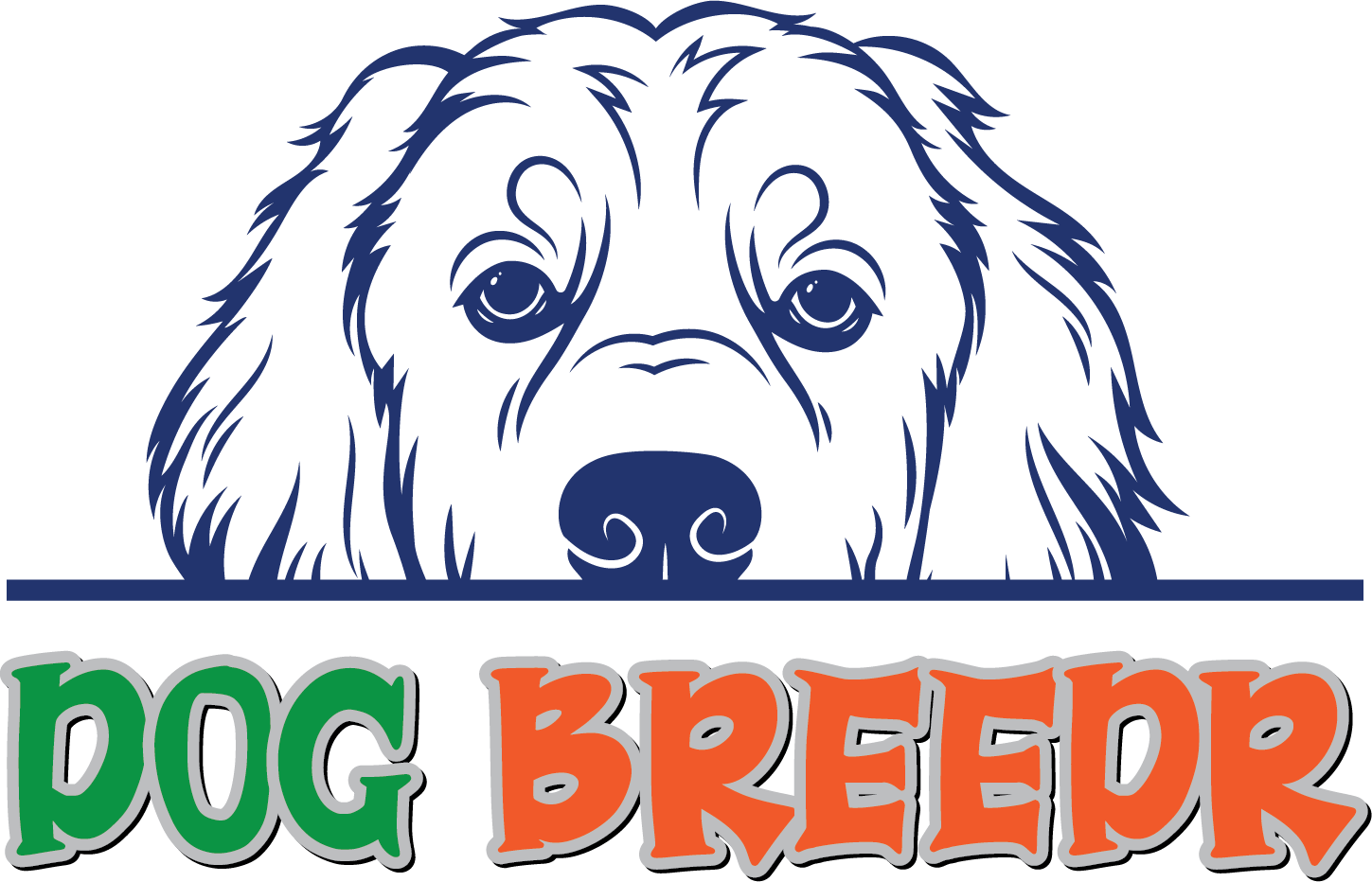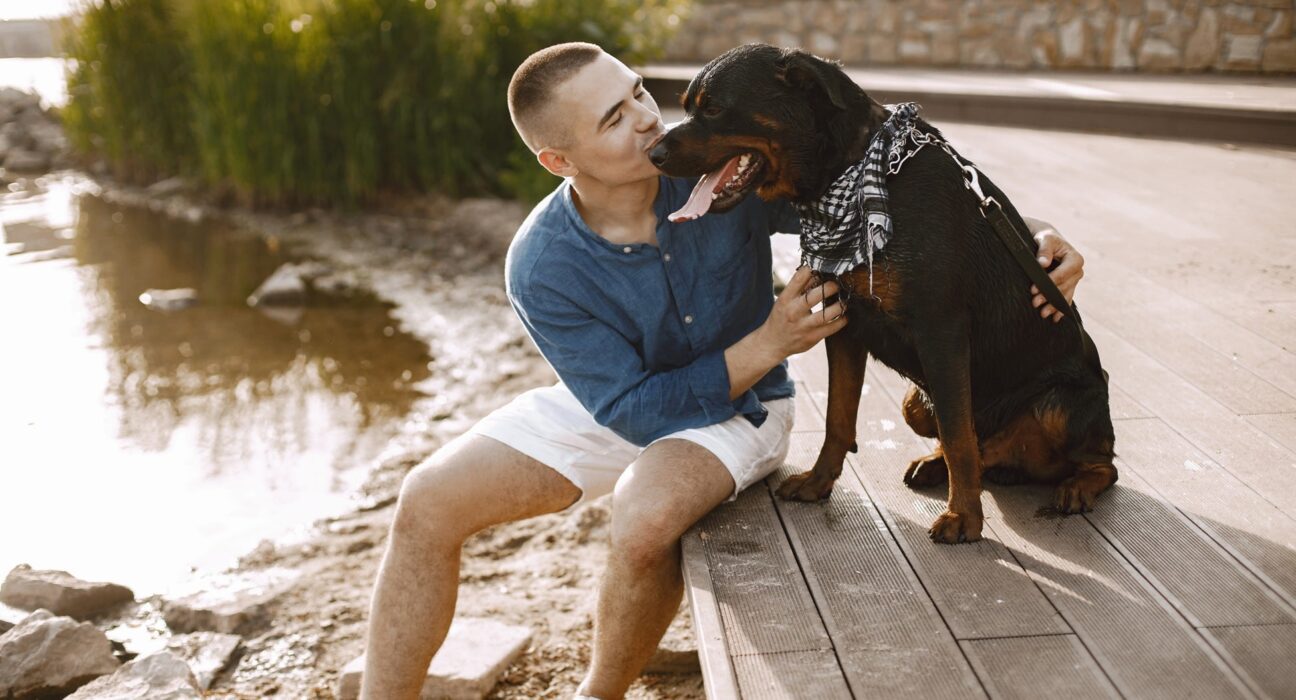The Rottweiler is a breed of large and powerful dog originating in Germany. They are primarily used as guard dogs for protection but have also been employed as search-and-rescue and police dogs.
Characterized by their strong and muscular physique, intelligence, and loyalty to their owners, the Rottweiler has become one of the most popular breeds in the world.
While some people may be intimidated by their size and presence, they can make excellent companions when properly trained and cared for. This article will explore what makes the Rottweiler such an intriguing breed.
Rottweiler History
Rottweilers are descended from ancient Roman drover’s dogs that worked alongside them in herding cattle, while the modern breed is thought to have developed in Germany during the late 19th century.
The original purpose of this canine was to pull carts full of meat and other goods through town markets and fairs.
As automobiles became more commonplace, the Rottweiler’s job slowly declined until they were used mainly as guard dogs.
Rottweiler Appearance
The Rottweiler is a large dog with an impressive physique that is often intimidating to strangers. They are covered in short, dense fur that is black and tan.
Males can reach heights up to 27 inches at the shoulder and weigh around 110 pounds, while females usually stand 22 inches tall and weigh between 80-100 pounds.
In addition to their size, the Rottweiler has a wide chest that tapers to a deep ribcage and muscular hindquarters. They have broad heads with almond-shaped eyes, large noses, and medium-sized ears that stand erect.
Rottweiler Temperament
Despite their intimidating appearance, the Rottweiler is known to be one of the most loyal and devoted pet breeds in the world.
Although they can appear aloof or even aggressive towards strangers, they are incredibly affectionate and protective of their owners’ families and friends.
In addition to being an excellent guard dog for home protection, the Rottweiler also excels in obedience training, agility competitions, and search-and-rescue work due to its intelligence.
Rottweiler Care And Grooming
Grooming a Rottweiler is an integral part of overall care. A proper grooming routine can help to keep your dog healthy and looking its best.
While professional groomers should be used for more complicated tasks, there are several steps that you can do at home to help groom your Rottweiler.
Brushing is one of the most important parts of caring for a Rottweiler’s coat. Their thick double coats should be brushed at least twice weekly using a firm-bristled brush.
This will help prevent tangles, mats, and dirt build-up while helping to distribute natural oils throughout the coat. It is also essential to make sure you check your dog’s coat regularly for fleas and ticks.
Bathing is another essential part of Rottweiler care. Depending on activity levels, it is generally recommended that a Rottweiler be given a bath every 8-12 weeks with a quality dog shampoo.
Make sure to rinse the coat thoroughly after bathing to remove any dirt or soap residue that could irritate their skin.
It should also be noted that frequent baths can strip the natural oils from their coat and cause dryness, so use caution when bathing your pet.
Another integral part of grooming is nail care. It is essential to trim your Rottweilers nails regularly since if they get too long, they could become painful for them to walk on and even lead to infection or injury in the long term.
It is a good idea to get your vet or a professional groomer to show you how to trim your dog’s nails safely and adequately.
Finally, dental care is very important for Rottweilers and should be noticed when providing grooming services.
Regular brushing at home can help keep teeth healthy and reduce the amount of tartar build-up that leads to bad breath, gum disease, and other mouth diseases.
It would help if you also took your dog in for regular examinations at the vet so they can also check on their oral health.
By following these steps, you can be sure that your Rottweiler’s coat is healthy and looks its best. Grooming them regularly and providing the proper care is essential for their overall health and well-being. It will also help you bond with your dog and keep them happy and loved.
Follow these steps to ensure your Rottweiler stays clean, healthy, and looking its best.
How To Train A Rottweiler Puppy
Training a Rottweiler puppy requires patience and consistency. It is essential to start training early, as puppies learn quickly, and by establishing good habits early on, you can avoid many potential behavioral issues later in life.
- Positive reinforcement
Use positive reinforcement when training your puppy; reward them with treats or verbal praise for demonstrating the desired behavior. This will teach your puppy that performing your desired behaviors will result in rewards.
It is also essential to be consistent with commands; if “sit” means sit every time, then stick with it – do not allow them to get away with not following the command sometimes and, other times, allowing it. This inconsistency can be confusing for your pup and may cause issues.
- Crate training
Crate training is also essential for Rottweiler puppies. Crate training helps to establish potty training, creates a safe space when your pup needs to relax, and helps with separation anxiety.
When crate training, start slowly by allowing them to explore the area independently. Once they are comfortable in the crate, you can begin using it for short periods at first – about 10 minutes per session several times a day – gradually increasing this time as your puppy gets used to the crate.
- Socialization
Socialization is key when working with a Rottweiler puppy. Expose them to different people and animals while young so they learn how to interact in social situations.
This will help prevent aggressive behavior later in life. When introducing them to new people use positive reinforcement and ensure they are comfortable with the situation before moving on.
- Regular exercise
Finally, regular exercise is crucial for Rottweiler puppies. They need plenty of physical activity to stay healthy and happy.
Make sure to provide your pup with a daily walk or playing session to burn off some energy – this will also help keep them from getting bored and engaging in destructive behaviors.
Training a Rottweiler puppy takes patience and dedication, but following these steps can result in a well-behaved dog who is a joy to have around.
With enough time and consistency, you’ll be able to raise a wonderful companion animal who will bring you years of love and loyalty.
Conclusion
Rottweilers are beautiful, loyal dogs who need the proper care and attention to stay healthy and happy. Grooming them regularly is essential for their overall health, and training them from a young age will ensure they grow up well-behaved adults.
Positive reinforcement, crate training, socialization, and regular exercise are key components of successful puppy training.
With patience and dedication, you can raise a wonderful companion animal who will bring you years of love and loyalty.

